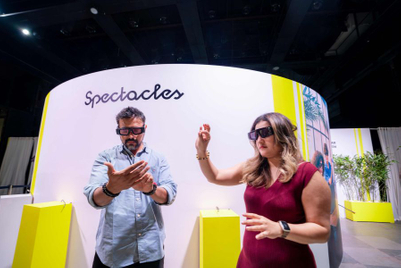
For years, the promise of advertising in private spaces like chat feeds was considered a line few social platforms dared to cross. Direct messages were sacred; they were intimate, unmonetised, and off-limits.
But Snapchat, a platform that thrives on immediacy and ephemerality, has been quietly rewriting that rulebook. And now, with its expanded partnership with Integral Ad Science (IAS), it’s betting that transparency and third-party measurement will convince marketers that its most private space is also one of the most valuable.
Every day, 469 million people use Snapchat to create, share and enjoy visual content. It’s a habit-driven platform, where communication and creativity blur into one. Sponsored Snaps, where ads that appear natively within Snapchat’s Chat Feed, represent an experiment in blending brand messaging with everyday social behaviour. For Snapchat’s advertising partners, this integration into the user’s chat inbox has become a high-stakes opportunity: intimate, high-frequency, but potentially intrusive.
Yesterday, IAS announced an expansion of its measurement partnership with Snap Inc. to provide advertisers with third-party tools to validate and optimise ad effectiveness across Snapchat, including Sponsored Snaps. The move builds on a collaboration that began in 2018 and has since evolved to include Viewability, Invalid Traffic (IVT), Brand Safety and Suitability measurement.
“Advertisers are always looking for ways to reach Snapchatters with high-quality, measurable campaigns,” said Fintan Gillespie, global director at Ad Partnerships Group, Snap Inc. “With the addition of Sponsored Snaps, we’re giving brands even more flexibility to engage their audience in authentic, transparent environments – while continuing to ensure trusted, third-party measurement through our partnership with IAS.”
From the advertiser’s lens, the expansion signals an effort to bring accountability to a format that sits at the intersection of personal interaction and performance marketing. IAS’s Total Media Quality (TMQ) framework will now measure Viewability and Invalid Traffic across Chat Feed ads, with additional Brand Safety and Suitability coverage for other Snap placements.
Lisa Utzschneider, CEO of IAS, said, “IAS is committed to providing advertisers with greater transparency wherever they allocate digital media spend so they can scale campaigns with confidence. The expansion of our partnership with Snapchat to measure across new ad formats underscores the importance of third-party verification, and demonstrates the trust advertisers place with IAS, knowing our solutions offer superior brand protection, uncover rich insights and increase ad value.”

IAS’s proprietary system combines frame-by-frame machine learning with multimodal signals, comprising image, audio and text, to assess contextual safety and suitability. Advertisers can track metrics such as Time-in-View and IVT rates through the IAS Signal dashboard, giving them a clearer picture of how ads perform within Snapchat’s diverse ecosystem of Story Ads, AR Lenses, Collection Ads and Commercials.
The timing of this collaboration expansion is telling. Snap, under CEO Evan Spiegel, is in the middle of a structural reorganisation designed to “better align engineering and technology investments with business priorities.” In a letter to shareholders in August, Spiegel announced a distributed model for its engineering teams, with Ajit Mohan, chief business officer, overseeing monetisation engineering, and Bobby Murphy, CTO, leading core applications. The move coincided with the departure of Eric Young, Senior Vice President of Engineering, as Snap doubled down on linking product development with revenue growth.
Spiegel framed the reorganisation as a way to empower teams “to take greater ownership and drive continued innovation for our community and advertising partners.” For marketers, that translates to a sharper focus on monetisable formats that fit organically into user journeys.
One of those formats, Sponsored Snaps, has been a risky but surprisingly effective bet. Introduced last year, the format inserts brand messages directly into users’ Chat Feeds. Traditionally, this would have been a red flag: users have historically resisted ads in private message environments. But Snapchat claims its audience has responded differently.
“When Snapchatters fully engage with a Sponsored Snap by opening to the full-screen ad, we see 2.3x more lift in Unaided Brand Awareness, 1.4x more lift in Ad Awareness, and 1.8x more lift in Purchase Intent than other social platforms,” Snap reported during Advertising Week in October.

That performance boost may reflect a broader behavioural shift, as public posting declines and private sharing dominates, chat has become the new social feed. Snapchat cites internal research showing that 86% of social media users in the U.S. are open to getting messages from brands on chat-based platforms like Snapchat and Messenger. What was once considered intrusive is now being reframed as conversational marketing.
For IAS, this trend offers fertile ground for measurement innovation. Beyond Snap, the company has been steadily extending its reach across the world’s biggest social ecosystems. In September, it teamed up with Good-Loop to enable advertisers to measure the carbon emissions of every ad impression across the open internet — a move towards greener, more accountable advertising.
These initiatives are unfolding alongside a solid financial performance. In its Q3 2025 results, IAS reported total revenue of $154.4 million, up 16% year-on-year, with optimisation revenue growing 21% to $73.7 million. Measurement revenue rose 8% to $57.1 million, while publisher revenue climbed 21% to $23.5 million. Gross profit for the quarter was $118.8 million, with a margin of 77%.
However, net income dipped to $7 million, compared to $16.1 million in the prior-year period, reflecting rising operational costs and the company’s ongoing acquisition by Novacap. “We exceeded our revenue and adjusted EBITDA outlook for the third quarter with strength across our businesses,” said Utzschneider. “We are focused on working towards closing the previously announced acquisition of IAS by Novacap while advancing our business priorities.”
The company’s adjusted EBITDA stood at $55.3 million, up 9%, and international revenue, excluding the Americas, grew 8% to $44.1 million, representing nearly a third of its total business. The underlying signal is one of a company expanding aggressively into both new markets and new media formats, even as profit margins narrow in the short term.
For advertisers, IAS’s extended measurement coverage on Snapchat offers more than just analytics — it’s a reassurance mechanism. As social media becomes increasingly fragmented and audience attention migrates to closed environments like chat and messaging, third-party verification provides a check against inflated metrics or opaque reporting from platforms.
Snap, meanwhile, is under pressure to monetise efficiently amid slowing ad growth and heightened competition from Meta’s Reels and TikTok’s video commerce ecosystem. By deepening its partnership with IAS, Snap is effectively outsourcing part of its credibility, inviting an external auditor to validate the quality of its attention economy.
The move also reflects a larger recalibration in digital advertising: the push towards attention-based metrics rather than mere impressions. IAS’s earlier collaboration with Lumen Research to introduce attention measurement on Snapchat hinted at this shift. Advertisers are increasingly interested in understanding not just whether ads were viewed, but for how long, in what context, and alongside what kind of content.
For platforms like Snapchat, where user engagement is fleeting but frequent, that distinction matters. An ad that’s open for two seconds in a chat context might carry more impact than one that sits passively in a feed. Measuring that difference, and proving it to advertisers, is what IAS’s data-driven framework is designed to do.
Still, questions remain about how sustainable Snapchat’s chat-based ad strategy will be. While initial engagement metrics are strong, the format’s long-term success will depend on user tolerance. Sponsored Snaps might perform well today, but if users begin to see them as spammy or invasive, the balance could quickly tip.
For now, Snap seems confident that its user base, predominantly Gen Z, views brand interaction as an extension of social interaction. “People are not only comfortable connecting with friends in chat, they’re also open to hearing from brands there,” the company noted. That comfort level may be unique to Snapchat’s culture of visual storytelling and ephemeral messaging.
As Snap and IAS deepen their collaboration, the implications for advertisers go beyond Snapchat itself. It signals a new phase in digital media where trust, transparency and context will define ad effectiveness more than reach ever did. Third-party verification is no longer an optional add-on; it’s the scaffolding on which attention economies are being rebuilt.
In an industry that has long oscillated between privacy concerns and performance demands, the Snap–IAS partnership marks a pragmatic middle ground: turning the private inbox into a measurable, brand-safe space. Whether users will continue to see it that way is another story — one that will unfold, one Snap at a time.










